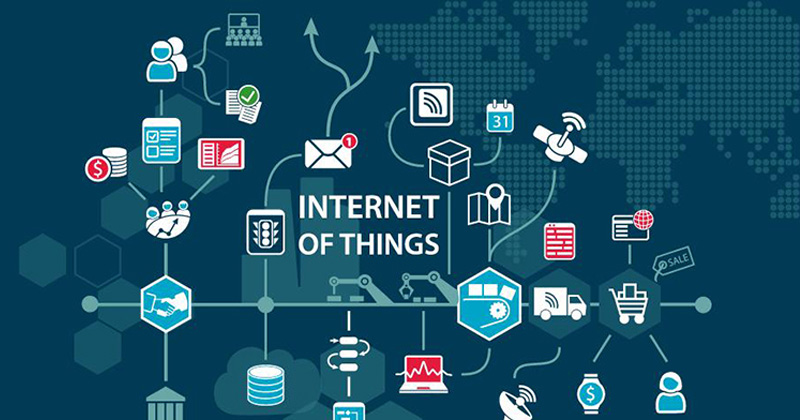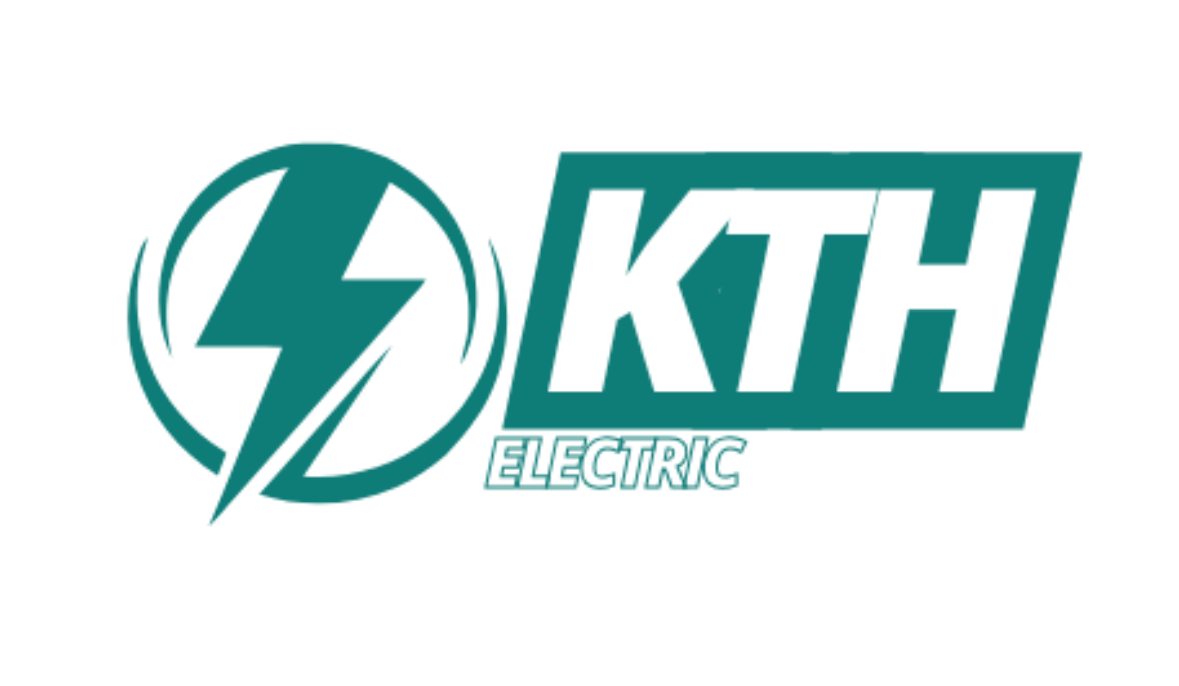Service
What is IoT (Internet of Things)? From Smart Homes to IIoT in Energy Management
IoT (Internet of Things) is a network of physical devices, vehicles, and other smart items embedded with sensors, software, and internet connectivity. They can collect and exchange data in real-time without direct human intervention.
In 2025, the number of active IoT devices is expected to reach 21.1 billion, a 14% increase from the previous year, thanks to the explosion of low-cost processing chips and high-speed telecommunications. Everyday devices—from toothbrushes and vacuum cleaners to cars—are using sensors to collect data and respond intelligently, opening a new era of automation and efficiency.
For professionals in the electricity and automation industry, understanding IoT is crucial. You can learn more foundational concepts in our Knowledge section.
How Does IoT Work?
An IoT system operates using three components: (1) Smart devices (sensors) to collect data, (2) An IoT application (AI/ML) to analyze and make decisions, and (3) A user interface (app/web) to control it.

A complete IoT system collects and exchanges real-time data through three core components:
- Smart Devices: These are the “senses” of the system. Devices like TVs, security cameras, or industrial sensors gather data from their surroundings, user inputs, and transmit/receive information over the internet. Setup: Connect the device to a network (Wi-Fi, 4G/5G, LoRaWAN), install the management application.
- IoT Application: This is the “brain” of the system. This application integrates data from multiple devices, using Artificial Intelligence (AI) and Machine Learning (ML) to analyze it and make intelligent decisions. Example: Analyzing power consumption data to predict maintenance times. A typical example is the PME (Power Monitoring Expert) energy monitoring system from Schneider Electric, which helps turn raw data into detailed insights. Deployment: Use cloud platforms like AWS IoT or on-premise systems to process massive amounts of data.
- Graphical User Interface (GUI): This is where users interact with the system. You can manage via a mobile app or web interface to register, control, and monitor devices. Tip: Always use multi-factor authentication (MFA) to secure access, especially when controlling critical systems like electrical panels.
A Few Examples of IoT Devices
Common examples of IoT include: Smart homes (controlling lights, temperature), Smart cars (vehicle monitoring, EV charging stations), and Smart cities (energy and traffic management).
IoT is being applied in practice to optimize efficiency and provide convenience:
- Smart Homes: Smart outlets monitor power, thermostats control temperature, and sensors manage gardens. They help automate tasks like turning devices on/off, managing rental properties, or optimizing solar power systems to save costs.
- Smart Cars: Modern cars connect via cameras, entertainment systems, and collect data from the accelerator and brakes to monitor performance. The biggest application today is electric vehicles (EVs) and charging infrastructure. IoT helps manage the installation of EV charging stations, monitor charging status, and automate payments.
- Smart Buildings & Cities: Urban sensors measure air quality, manage smart lighting to reduce energy, and predict infrastructure maintenance needs. In buildings, IoT helps optimize space, reduce operational costs, and proactively schedule electrical system maintenance services.
What is Industrial IoT (IIoT)?
IIoT (Industrial Internet of Things) is the application of IoT in industrial environments (manufacturing, energy, transportation) to optimize processes, monitor equipment, and perform predictive maintenance to increase business efficiency.
This is the area where IoT creates the greatest impact. IIoT (Industrial Internet of Things) applies smart devices in manufacturing, retail, and healthcare to increase business efficiency. IIoT provides real-time data on supply chains, logistics, and machine performance.
- Manufacturing: IIoT is the key to Predictive Maintenance. Instead of waiting for a machine to break, sensors monitor the vibration and temperature of machinery (e.g., transformers) to provide early warnings of abnormalities, allowing for transformer maintenance to be planned before costly downtime occurs.
- Logistics and Transportation: Manage inventory, optimize routes and fuel, control the temperature of refrigerated containers.
- Worker Safety: Wearables can monitor worker health and provide alerts when they enter hazardous areas in complex industrial electrical environments.
What Benefits Does IoT Bring to Businesses?
The main benefits of IoT for businesses are: Converting data into insights, enhancing safety and security, accelerating innovation, and enabling flexible operational scaling.
- Converting data into insights: This is the biggest benefit. AI and ML can analyze sensor data to predict outcomes. For example, analyzing warranty data to predict maintenance needs. Electrical system assessment services use IoT data to identify risks and inefficiencies.
- Accelerating innovation: Analyzing customer behavior data helps companies create better-targeted products and marketing campaigns.
- Enhancing security and safety: IoT allows for continuous monitoring of physical infrastructure (like substations, factories) and automatically updating firmware for devices. It also allows for the integration of advanced protective devices like phase loss relays into a central monitoring system.
- Scaling flexibly: Deploy customer-centric solutions and use data to replenish goods or dispatch technical services in a timely manner.
Core IoT Technologies
The three foundational technologies of IoT are: Edge Computing (for local processing), Cloud Computing (for large-scale storage and processing), and Machine Learning (for automated data analysis).
- Edge Computing: Instead of sending all data to the cloud, edge computing processes data directly on the device (or near the device). This helps reduce latency and increase response speed, which is critical for safety applications and robot control.
- Cloud Computing: Provides the ability to store, manage, and process data remotely with nearly infinite scale.
- Machine Learning: ML algorithms “learn” from IoT data to make real-time decisions, such as detecting anomalies or optimizing energy consumption.
IoT Platforms (Like AWS) And Major Brands
Cloud platforms (like AWS IoT) provide management and security services. They work in parallel with hardware devices from major brands like Schneider Electric to create a comprehensive IoT ecosystem.
Platforms like Amazon’s AWS IoT combine AI and IoT to improve business operations. They provide big data management services with strict security layers, encryption, and access control, allowing for scaling to billions of devices.
For these solutions to work, they need to integrate with leading hardware devices. Major brands like Schneider Electric lead the way in developing IoT-ready devices (like CBs, sensors), forming a complete ecosystem from hardware to software.
Important Note: Common Mistakes to Avoid
Common mistakes when implementing IoT are: Ignoring security (must use MFA, encryption), not planning for scale (choosing inflexible platforms), and poor data management (not using AI to filter).
To implement IoT successfully, avoid:
- Lack of security: Always use MFA and data encryption. An unsecured system can lead to serious consequences. (Example: Learn about how to prevent electric shock for EV charging stations).
- Not planning for scale: Choose a flexible platform that can grow with your business.
- Poor data management: Use AI to filter and keep only valuable data, avoiding “drowning” in a sea of data.
Frequently Asked Questions (FAQ) About IoT
1. How is IoT different from IIoT?
IoT focuses on consumers (smart homes), while IIoT focuses on industrial applications (manufacturing, energy) with higher requirements for reliability and security.
- IoT (Internet of Things): Usually focuses on consumer applications, like smart homes, personal wearables.
- IIoT (Industrial IoT): Focuses on applications in business and industrial environments, such as manufacturing, logistics, and energy management, with higher demands for reliability and security.
2. How to secure IoT devices?
To secure IoT: Always change default passwords, update firmware regularly, and use a separate network (VLAN) to isolate IoT devices.
- Always change the manufacturer’s default password.
- Regularly update the device’s firmware.
- Use a separate network (VLAN) for IoT devices to isolate them from the main computer network.
3. What are the IoT trends in 2025?
The main IoT trends in 2025 include: Edge Computing, 5G connectivity, broader AI applications, and Digital Twins technology for simulation.
The main trends include: Edge Computing (for faster processing), 5G integration (for high-speed connectivity), AI (for smarter analysis), and Digital Twins (for simulating physical systems).

Mr. Đỗ Tấn Quân oversees all content on the kth-electric.com website. Each article is crafted from his extensive expertise, combining reputable reference materials (with specific citations) and his vast practical experience. Readers can fully trust the accuracy and reliability of the information, ensuring that every shared piece of content provides valuable and trustworthy insights.

 Tiếng Việt
Tiếng Việt
